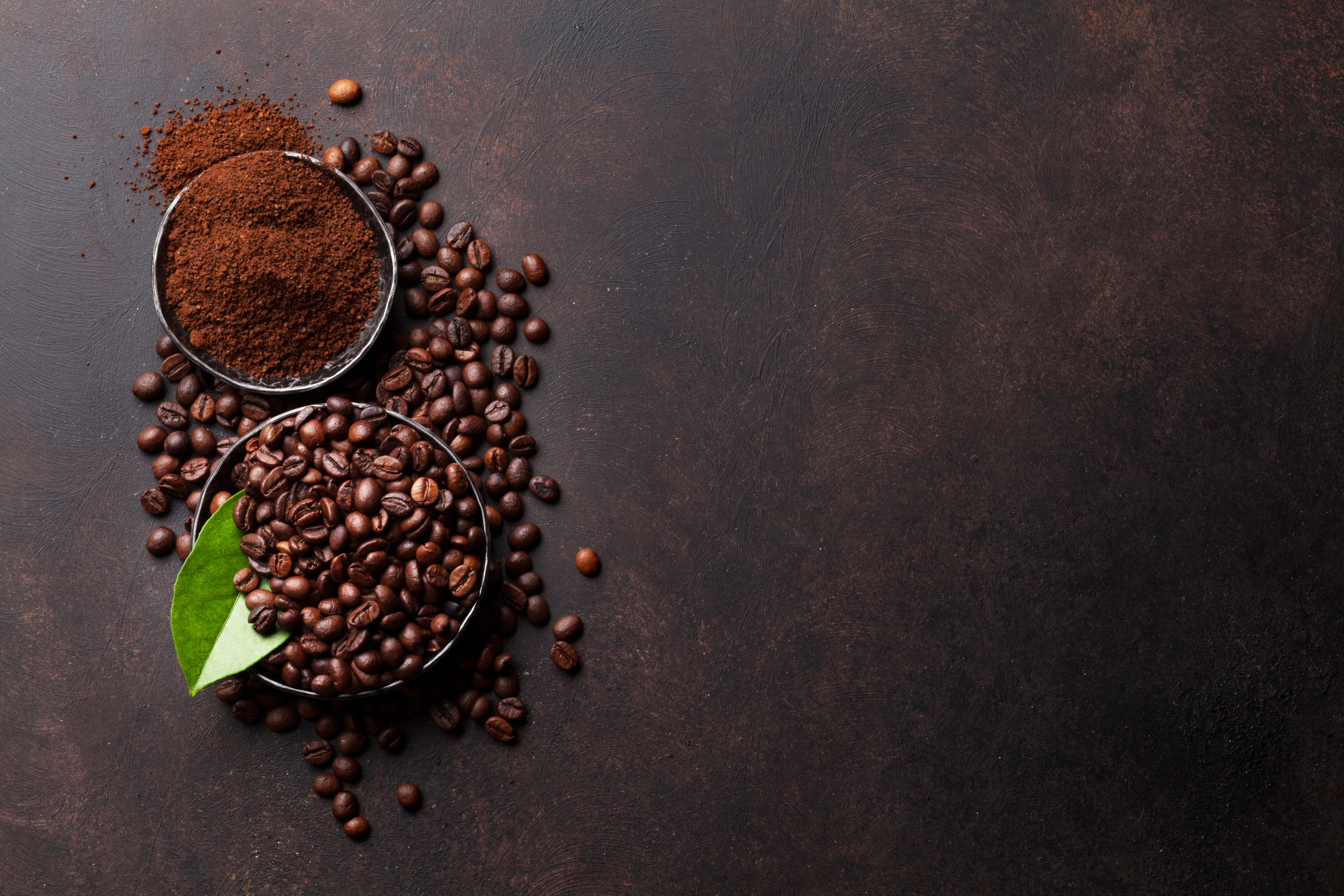
How To Cup Coffee At Home
How to Cup Coffee At Home

As a lover of coffee, you've probably heard of the word ''cupping'' and you don't know what it means, you feel it's just for professionals, that's wrong. Any lover of coffee can be part of this exciting process. You can cup coffee at home. Cupping is just a simple way to taste, access, and compare the quality, textures, or flavour of the coffee. Cupping coffee is the best way to compare coffees and develop your palate. It is also a great way to involve your family and friends who may have doubts about the amazing experience of having coffee.
Now you know what cupping is, let's get to the major things you need to consider before cupping coffee at home. You need to consider the kind of beans to use or the roast type to use. It is better to use single-origin beans for the cupping exercise. For the roast type, you will want to use medium roasted coffee beans. Dark roasted beans should be avoided. Also, take note of how freshly roasted the beans are.
Take note of the following before you start:
First, don't cup coffee immediately after brushing your teeth, chewing mints, or after eating as this can affect your taste buds. Cup in the morning hours when your palate is still fresh, you want to get the perfect taste.
Secondly, you should avoid using a strong perfume or odours like lotion, cigarette smoke, or aftershave that can affect your smell.
Thirdly, be consistent in your measurements. Consistency is the key element when experimenting.
Lastly, if you are cupping with someone else, do not talk as it may influence their observation. The room you are to use for cupping should be calm and devoid of distractions, you want to give this exercise your full attention.
You are now set. Here are steps to achieve proper cupping. Enjoy the experience!
Supplies you'll need
- Two to five single-origin coffees, preferably fresh
- A burr grinder in good shape
- Cupping bowls
- A kettle
- Two tablespoons for each coffee
- Filtered hot water
- Extra cups
- A tall glass to hold your cupping spoons
- Note-taking equipment- it can be a laptop, tablet, or pen and paper
- A scale
Let's start
Step One
Set up the area you will work with. Put a bowl on the surface you are using. It is okay if you don't have bowls of the same size, you can improvise. Place a napkin in front or behind each cup for cleaning, you don't want the area to get messy.
Step Two
Measure your coffee beans and the water needed. Place your bowl and tare, then fill the bowl with water, and write down how many grams it holds. Make sure you label each bowl to avoid mix-up. When cupping, the ratio of 8.25 grams of whole beans should be used with 150ml of water. Due to your cupping bowl size, you can use a ratio of 0.055g coffee per 1 ml.
Your cupping bowls can be made of ceramic or glass material. It is better if the cups are made of the same material so that it can retain heat. Also, all cups ought to be of identical volumes but if they are not just use any bowl you have as long as it can hold the same ratio for each sample.
Step Three
Prime your grinder, each time you use your grinder there are residuals of coffee grounds. You wouldn't want a tiny bit of foreign flavour to affect your cupping exercise. You can prime your grinder by putting a little quantity of the same beans you are about to grind. Now, grind them up, when this is done, you can discard them. By doing this, your grinder is left with leftovers of the fresh coffee beans. When grinding, make sure that 70-75 percent of the grind passes the 20 mesh sieve. For the cupping spoons, it should be able to hold 4-5 ml of coffee sample, a nonreactive metal is recommended.
Step Four
Fill your kettle with water and heat it. If you own a thermometer, try to keep it between 90 to 96 degree celcuis. Any kettle will work as long as it can hold enough water for the experiment, the kettle can be fancy or basic, anyone you prefer. When the water is boiled, wait for a minute before adding it to the coffee. To get the best results, avoid using tap water. It is better to use bottled water or filtered water. Ensure that the water you are using is odourless and tasteless on its own.
Step Five
Grind your coffee and add to one of the bowls, be sure to use a medium-coarse grind setting. Repeat this process for all coffees. Before grinding subsequent coffees, grind a little bit of the new coffee and discard, you don't want to mix the flavours. It is good to label each coffee packet and bowl being used with a number or letter to avoid getting confused.
Step Six
This is the part where it gets interesting, take a firm sniff of each coffee while your mouth is open for all coffee samples. You can also close your eyes while you smell, it will help you focus. What do you notice? Put your note-taking equipment into good use. Write down anything you notice. Do you smell nuts, lavender, or cinnamon? something fruity?

Step Seven
Add the water into the bowl. Once this is done, smell each coffee sample again. Does it smell different? Make more notes on what you noticed.
Step Eight
A few minutes after you add the water, the top of the bowl must have developed a thick layer of coffee grounds and bubbles often referred to as the ''crust''. Use two cupping spoons out of the tall glass and break the crust, them remove it. Breaking the crust simply means pushing the floating grounds to the side of the bowl. You should stir before breaking the crust. Use a consistent stirring pattern from cup to cup (e.g 4-5 stirs per cup). Inhale again, from this smell you'll feel like you have gotten the actual taste of the coffee. Break the crust for all coffee samples, remember to take notes as you do this. There are no right or wrong descriptions, don't bother about vocabulary.

If a friend or family member is a part of this fun experience, let them take notes too. These notes will come in handy when you want to compare. After breaking the crust, stir the top of each coffee with a clean spoon. This allows more of the coffee ground to sink to the bottom. Remember to rinse the spoon in the tall glass of water in between to avoid mix-up.
Step Nine
Now we have gotten to the fun part, it is time to taste the coffee. Use a clean spoon from the tall glass to scoop a spoonful of the coffee. Remember, you should not allow coffee grounds into the spoon. Slurp the coffee across your entire palate and let the aroma reach your nose. Is it creamy? Thin? Is the coffee sweet? Would you be able to drink the coffee without adding sugar? Does the coffee have bitterness? Do you like it? Does it taste like something you know? Is the flavour stuck in your mouth or did it completely go after drinking? Take as many notes as you can while you observe all these.

Sweetness isn't the only thing you should look out for while cupping coffee. The sweetness of coffee comes from the sugar content of the fruit and this sweetness can be affected during the processing methods. You should also taste for acidity. In a world of coffee, acidity can be a great thing. It creates a nice contrast to the sweetness. Use the extra cups to keep anything you skim from your samples.
Professional cuppers taste as many coffees at one time, they use the extra cups as a spittoon to avoid taking too much coffee but you are cupping a few coffees, there is no need for a spittoon. If you plan to set up more rounds, it's good you keep a spit cup available to avoid getting over-caffeinated. Also, if you are cupping for the first time and you are not familiar with the flavours present in the coffee, you can keep the SCAA Flavour Wheel handy. This way, your notes can be precise. If you are cupping with a family member or friend, they should take notes.
To get a final impression, wait for 2-3 minutes before you taste again. When the coffee becomes too cold to enjoy, you can discuss what you wrote down with others. Discussing sensory perceptions with others can expand your knowledge and hone your cupping skills. As you discuss, try to avoid biases.
Great! You have been able to cup coffee at home. It was an interesting experience, right? You can now expand your palate. As the saying goes, practice makes perfect. You should cup more coffee at home before you choose a lifetime flavour.
 We recommend buying our freshly roasted coffee beans. SHOP NOW
We recommend buying our freshly roasted coffee beans. SHOP NOW
